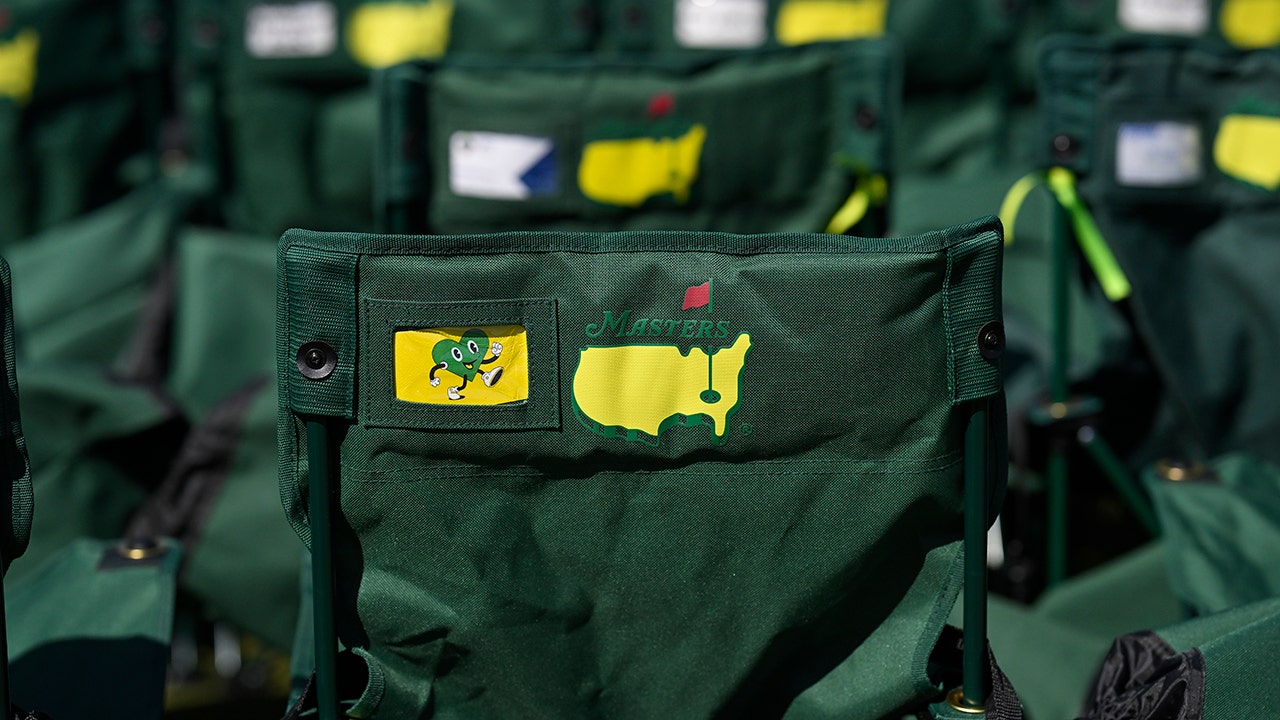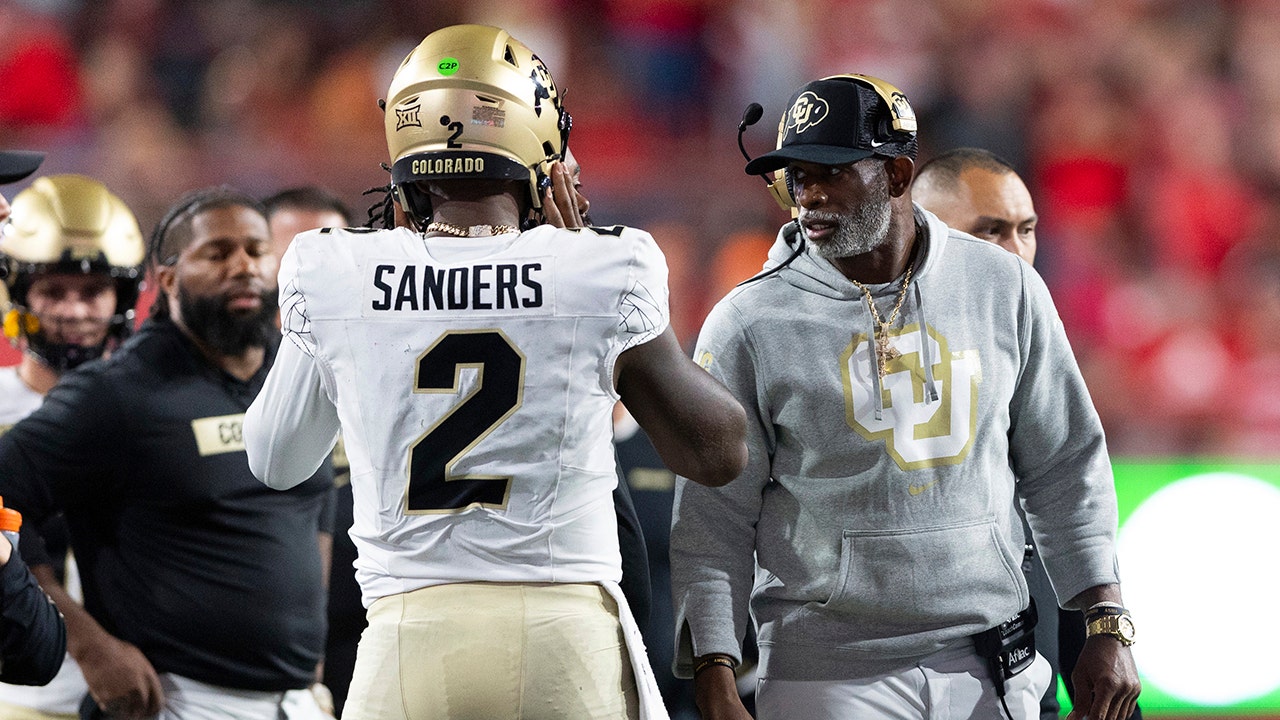— Reporting by Andrew Marchand, Nicole Auerbach, Stewart Mandel and Chris Vannini
College football’s future could receive some needed clarity this week. At least, that is the hope of many involved in planning the sport’s much-anticipated expanded postseason.
ESPN has agreed to terms with representatives for the College Football Playoff on a six-year, $7.8 billion extension to televise the event through 2031-32. But the commissioners and the presidents that run the CFP have not yet agreed on any aspects of the format beyond the 12-team model in place for the next two seasons, setting up a pivotal few days of meetings.
The terms agreement negotiated between ESPN and the firm CAA Evolution, which represents the CFP, has been in place for months, but CFP leaders still need to vote on the deal for it to take effect. Those leaders’ inability to reach consensus on topics they were hoping to settle before signing has been described by some executives involved as a “mess.”
Commissioners have said that they’re treating the Playoff for the 2026-27 season as a blank slate, with no special allegiance to any formats or decisions made over the past decade. But that approach means there’s a lot to settle, from automatic berths to revenue distribution, and outside onlookers are eager to see progress.
Meanwhile, ESPN executives are growing impatient and, as Puck business writer John Ourand first mentioned, will consider pulling the offer if the CFP fails to get its act together soon.
The Board of Managers, the university presidents and chancellors who make up the organization’s highest governing body, will meet virtually on Tuesday. The commissioners (and Notre Dame leadership) who make up the CFP’s Management Committee will meet in person in Dallas on Wednesday. Can they reach a consensus on the details for 2026 and beyond that have held up forward progress so far? And if not, what happens?
“What’s the alternative? No Playoff?” said a source involved in the discussions. “That’s not feasible. That would be a disaster.”
One possible alternative is what many across college sports feared when the SEC and Big Ten announced their new joint advisory group: An eventual breakaway of the richest and most powerful leagues in college athletics. Even if only serving as an implied threat, it could give the two conferences significant leverage in negotiations that will determine the future of college athletics.
Those attending the two meetings this week are preparing for a battle that could become cutthroat and contentious.
“The corporate, bottom-line world does not have the same expectations of collegiality from colleagues as higher education,” one said.
And when it comes to CFP negotiations, they clash.
It’s been nearly three years since a four-person subcommittee first proposed a 12-team model. It’s been more than 17 months since the CFP’s Board of Managers forced the commissioners back to the table and officially approved it. Yet very few of its most consequential issues are resolved, despite dozens of meetings of the commissioners, mostly at Dallas Fort Worth International Airport hotels. Those on the inside know how bad it looks to those on the outside.
“It’s embarrassing,” said one commissioner. “It was embarrassing (how long it took) to get to 12.”
Big-time college athletics has seen dramatic change over the last three years, with Oklahoma and Texas joining the SEC, USC and UCLA moving to the Big Ten and the subsequent implosion of the Pac-12. There has also been considerable turnover among the power conference commissioners; only the SEC’s Greg Sankey has been at the helm longer than three years. The Big Ten and Big 12 hired leaders with professional sports backgrounds.
Some commissioners in the room acknowledge that the mighty Big Ten and SEC have the leverage to chart a course forward, but have yet to throw it around. Those commissioners also say they don’t know what, exactly, the Big Ten and SEC want out of the remaining debates. The hope is more clarity at the meetings Tuesday and Wednesday.
The Pac-12’s implosion has accelerated a push to modify the 12-team model to five conference champions and seven at-large berths for the next two seasons, from the original structure that included six of each. The board is expected to vote on the 5+7 plan during its virtual meeting on Tuesday, according to three sources briefed on the process.
Washington State president Kirk Schulz, the Pac-12 representative and lone holdout in the board’s most recent meeting, is expected to propose that WSU and Oregon State receive revenue and voting powers similar to Power 4 schools in 2026 and beyond. It’s unclear whether there is much support for that, especially since future revenue and governance plans have not been determined for anyone.
Two sources involved in the approval process said they expect 5+7 to be the starting point of the format debate for 2026 and beyond but acknowledged that it may not be the final resolution. Sankey has suggested on numerous occasions a world with no automatic berths at all. Big Ten commissioner Tony Petitti has suggested reconsidering bracket sizes that were previously passed over, such as a 16-team field, people familiar with that discussion have told The Athletic.
On the topic of revenue distribution, it’s safe to assume that leagues will be rewarded both for the number of teams that make the field and for how far those teams advance, much like the payout model for the men’s NCAA tournament, one source briefed on the discussions said. How much participation and victories are worth remains unresolved, as is the starting amount allocated to each league. Currently the Power 5 leagues split about 80 percent of the CFP revenue, and each conference receives roughly the same share regardless of its appearance or performance in the postseason.
One source involved in the discussions said they expect the Big Ten and SEC to push for revenue shares larger than those given to the Big 12 and ACC, creating further separation between the two groups. The differentiation could be in the form of a larger percentage of revenue for the Big Ten and SEC on a per-league basis or on a per-school basis, the source said.
Then there’s the question of governance: Would the Big Ten and SEC, having newly formed a joint advisory group to “take a leadership role in developing solutions for a sustainable future of college sports,” push for more autonomy and/or more control of the enterprise? Decisions for 2026 and beyond won’t need a unanimous vote like they currently do, because the current contract does not roll over. And those two leagues could withhold support for the media deal until these issues are resolved to their liking.

ESPN “isn’t going to wait forever” for the Playoff to decide its future. (Photo: Stephen Lew / USA Today)
ESPN has not yet set a deadline for the CFP to ratify its deal, but as a source with knowledge of ESPN’s thinking said, “It isn’t going to wait forever.”
The current contract between the CFP and ESPN averages $609 million per year but escalates over time, which is why ESPN sees its new terms as a 28 percent increase, according to executives briefed on their discussions. The network is currently on the hook to pay around $800 million for each of the final two seasons of the original contract, and it values the four new first-round games at $100 million in total, making its outlay around $900 million over each of the next two years. If the new terms are ratified, the average payout over the life of the six-year deal comes to $1.3 billion a season through 2031-32, with the annual payment numbers escalating over the life of the contract.
ESPN also has the option to sublicense five CFP games per season, according to officials briefed on the terms of the agreement. At its discretion, ESPN can look at the market and decide if it wants to let other networks in for a fee at any point through 2032.
While ESPN has a terms agreement set, in the wake of multiple reports on the deal last week, some rival networks were being told by factions within CFP leadership they could submit a new bid, according to officials with knowledge of the discussions. But the likes of Fox, NBC and CBS have made no known offers. ESPN is still considered the clear frontrunner.
Fox and NBC, the two most likely networks to emerge as alternative destinations, have so far found the price of the potential CFP doesn’t pencil out, especially with the uncertainties surrounding the format. In the wake of the ESPN, Fox Sports and Warner Brothers Discovery “skinny bundle” partnership — in which the brands will offer their services direct-to-consumer for an estimated $40-$50 per month — NBC could possibly reevaluate a bid, but it would be quite a gamble by the CFP to wait and see whether NBC suddenly becomes interested, especially when the network would likely only be competing for a half package at best.
The CFP is part of ESPN’s five-year plan that includes a forthcoming new bid for NBA rights, a hope to continue its relationship with UFC and an interest in solving the regional sports network crisis affecting Major League Baseball, the NBA and the NHL. The $1.3 billion outlay per year sitting before the CFP is not a sum Disney CEO Bob Iger and ESPN chairman Jimmy Pitaro can find between the seat cushions of a Space Mountain ride.
ESPN already has CFP rights built into its books and would like to retain the full arsenal of college football’s main event as it launches its new venture with Fox Sports and WBD Sports this fall and ahead of its own standalone direct-to-consumer launch in 2025. The network recently re-upped to be the home of the Division I women’s basketball tournament and most other NCAA championships for $920 million over eight years, giving it potential control of the postseason for all of college sports except for the Division I men’s basketball tournament, which is owned by CBS and WBD Sports. If it were to walk away from the CFP, ESPN would still retain the long-term college football footholds of SEC and ACC exclusivity, Big 12 rights and, for the next two seasons, at least a majority of the CFP.
It is against that media backdrop that CFP leaders will meet this week, needing to sort through the “mess” and find a path to alignment in order to collect the billions that Iger and Pitaro have on the table.
“We’re 10 months away from the start of the expanded Playoff,” Notre Dame athletic director Jack Swarbrick told The Athletic. “There’s a lot to do. You don’t flip a switch. The clock is ticking.”
(Top photo: Chris Williams / Icon Sportswire via Getty Images)






